|
|
|
ADVERTISEMENTS
|
|
PREMIUM
- HAPPY HOLIDAYS!
- Siliconeer Mobile App - Download Now
- Siliconeer - Multimedia Magazine - email-Subscription
- Avex Funding: Home Loans
- Comcast Xfinity Triple Play Voice - Internet - TV
- AKSHAY PATRA - Bay Area Event - Sat. Dec 6
- Calcoast Mortgage - Home Loans
- New Homes in Silicon Valley: City Ventures - Loden Place - Morgan Hill
- Bombay to Goa Restaurant, Sunnyvale
- Buying, Sellling Real Estate in Fremont, SF Bay Area, CA - Happy Living 4U - Realtor Ashok K. Gupta & Vijay Shah
- Sunnyvale Hindu Temple: December Events
- ARYA Global Cuisine, Cupertino - New Year's Eve Party - Belly Dancing and more
- Bhindi Jewellers - ROLEX
- Dadi Pariwar USA Foundation - Chappan Bhog - Sunnyvale Temple - Nov 16, 2014 - 1 PM
- India Chaat Cuisine, Sunnyvale
- Matrix Insurance Agency: Obamacare - New Healthcare Insurance Policies, Visitors Insurance and more
- New India Bazar: Groceries: Special Sale
- The Chugh Firm - Attorneys and CPAs
- California Temple Schedules
- Christ Church of India - Mela - Bharath to the Bay
- Taste of India - Fremont
- MILAN Indian Cuisine & Milan Sweet Center, Milpitas
- Shiva's Restaurant, Mountain View
- Indian Holiday Options: Vacation in India
- Sakoon Restaurant, Mountain View
- Bombay Garden Restaurants, SF Bay Area
- Law Offices of Mahesh Bajoria - Labor Law
- Sri Venkatesh Bhavan - Pleasanton - South Indian Food
- Alam Accountancy Corporation - Business & Tax Services
- Chaat Paradise, Mountain View & Fremont
- Chaat House, Fremont & Sunnyvale
- Balaji Temple - December Events
- God's Love
- Kids Castle, Newark Fremont: NEW COUPONS
- Pani Puri Company, Santa Clara
- Pandit Parashar (Astrologer)
- Acharya Krishna Kumar Pandey
- Astrologer Mahendra Swamy
- Raj Palace, San Jose: Six Dollars - 10 Samosas
CLASSIFIEDS
MULTIMEDIA VIDEO
|
|
|
|
|
COVER STORY:
Unsung Heroine: Agnes Smedley
American feminist Agnes Smedley played a key role in assisting Indian freedom fighters in the U.S. and in Europe in the beginning of the 20th century, writes historian and folklorist Ved Prakash Vatuk.
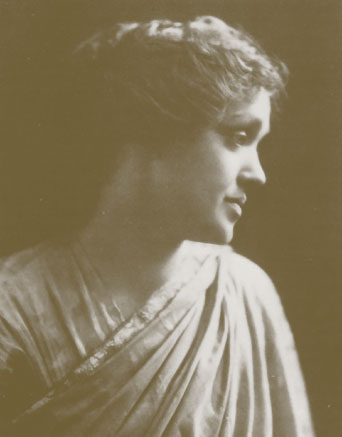 (Left): Agnes Smedley, circa 1920. (Left): Agnes Smedley, circa 1920.
Even though Agnes Smedley remains better known in China and Japan than either in her native country America or India, she played a very important role in the struggle for India’s freedom in the 1920s along with many Indian revolutionaries organizing outside India — both in the United States of America and Europe. In this essay we will briefly discuss her contribution to India.
An unabashed feminist, fearless journalist and writer as well as a relentless activist for the causes she believed in, Smedley inspired socially concerned writers like Alice Walker, because she wrote about poverty without romanticizing it. She had a truly generous heart and would sacrifice her life for the cause of oppressed and subjugated people anywhere. The span of her activism covered the three continents — America, Europe and Asia. Among her friends are counted such people as Mao Zedong, Jawaharlal Nehru, General Joseph Stilwell, and her enemies were also very powerful people like J. Edgar Hoover, Douglas MacArthur and Chiang Kai-shek.
In her autobiographical novel, Daughter of Earth, Agnes Smedley writes,
“What I have written is not a work of beauty. It is the story of a life, written in desperation, in unhappiness…. I belong to those who die from other causes — exhausted by poverty, victims of wealth and power, fighters in a great cause. A few of us die, desperate from the pain of disillusionment of love, but for most of us “the earthquake but discloseth new foundations” For we are of the earth and our struggle is the struggle of earth..”
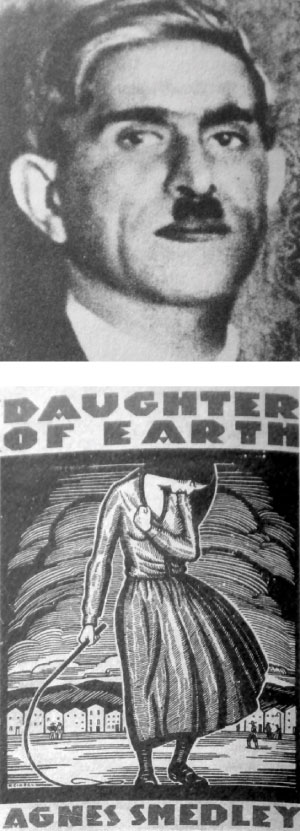 (Right, top): VIrendranath Chattopadhyaya, Smedley’s common law husband. (Right, top): VIrendranath Chattopadhyaya, Smedley’s common law husband.
(Right, bottom): Book jacket of the autobiography of Agnes Smedley.
This “daughter of earth” was born in a poverty ridden working class family in Osgood, Mo., in 1892. There was no electricity or running water in the shack they lived in. When she was ten, her father Charles Smedley “dragged” the family to the mining town of Trinidad in Colo., where Rockefeller’s Colorado Fuel and Iron Company “owned everything but air.” Her father went to this region to make his fortune, but “fell victim to a system the fruits of which were poverty, disease and ignorance for the miners.”
Smedley detested her life. Her mother’s death at the young age of 38 caused by hard work and deprivation left a deep scar on Smedley’s mind.
In 1911 at the age of 19, she entered Tempe Normal School in Arizona as a special student. She also joined its weekly, the Normal Student as a staff writer. She met a young Phoenix high school teacher Thorberg Brundin, a New Yorker who came to judge a debating contest. Later she met her brother Ernest. They became friends. Both brother and sister were strong socialists. Ernest and Agnes got married the same year. In 1913 Agnes registered as a student at San Diego Normal School. She helped found the school newspaper, Normal News. There she invited many socialist leaders to speak like Emma Goldman, Upton Sinclair and Eugene Debs. In 1916 she joined the Socialist Party of America. For her political views she was dismissed from the school where she was on the staff by now.
When she was working in that school, Indian activist Keshav D. Shastri was invited to speak there. However, he was not allowed to address the students. It was feared that his anti-British views supporting freedom of India would spur riots. His speech influenced Agnes. In Berkeley, Calif., she had heard Lala Hardayal had also mentioned the name of a great India leader Lajpat Rai, who was living in exile in New York. She tried to know more about Rai from Shastri.
Having been dismissed from the school, she left San Diego in 1917. Her marriage was also didn’t work out.
It was in New York that Agnes met Lala Lajpat Rai — the exiled leader of the Indian National Congress, who was called Panjab Kesari — the Lion of Punjab. He had a great influence on her. He began tutoring her in Indian history, with an aim of sending her to India as a teacher. At the same time she met many young Indian “revolutionaries,” who used to come to see Lalaji. They convinced her that India can never progress unless it was freed from British rule, just as America was freed — by revolution. Agnes made their cause her own wholeheartedly. She became their communication center. She kept their correspondence, their code, and their foreign addresses.
It was the time when America had entered the First World War. Many Gadar Party members had gone to India to fight British rule. Those who remained behind were supposed to send them arms and ammunitions. It was hoped that the German consulate would help them.
As soon as America entered World War I, the atmosphere changed. Any movement for India’s freedom from the American soil was considered against the British, an ally, and therefore against the American interest. Many of the Gadar leaders on the West Coast were arrested along with many members of the German consulate in San Francisco. It was the British government’s agents who provided the information against them. They were tried in the Indo-German conspiracy case in San Francisco — 105 in all — and sentenced to jail terms.
Agnes did not know that all mail sent to her by Indian revolutionary friends was being intercepted by the U.S. government. So while she was waiting for the arrival of one of them — Sailendra Ghose — from San Francisco, on the morning of March 15, 1918, military intelligence officers and representatives of the Justice Department ransacked her apartment and took her to interrogate. They found out about Ghose also had just arrived from San Francisco. They arrested him as well.
For the next two weeks Agnes was interrogated. She was kept in a solitary confinement. From her apartment, they brought books which included a black notebook which contained the names and addresses of Indian nationalists. She demanded to see a lawyer. But this was wartime. She had no rights to, she was told. She lay in a cold room fearing that they would find men listed in the black notebook. “If they were jailed their comrades would think I had betrayed them,” she kept thinking.
The government told the newspapers about a big plot against the British hatched by Ghose and Smedley. On April 1, she was indicted under the Espionage Act for attempting to stir up rebellion against British Rule in India. She was released from jail in 1919 after the war was over.
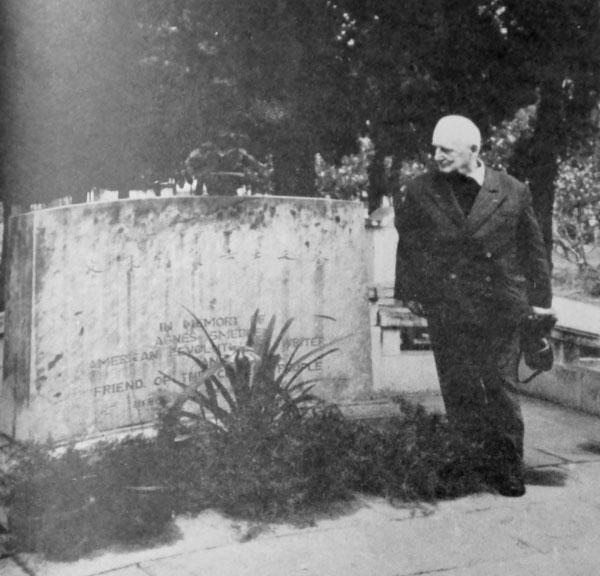
(Above): The ashes of Agnes Smedley lie buried in the outskirts of Beijing.
At that time all Indians who were jailed during wartime faced deportation under the Espionage and Sedition Acts. It loomed large for those who were serving their sentences in San Francisco as a result of Indo-German Conspiracy Case. To fight this, March 6, 1919 Smedley and her American and Indian friends founded Friends of Freedom for India. Robert Lowett opened the pages of his famous publication of Dial to discuss the cases of these Indians fully. He discussed the role of the British Indian police in the trial of Indian activists particularly of Tarak Nath Das. FFI members were outraged at this direct and open British interference in the internal affairs of the U.S. People were also told about the $2.5 million that the British spent at these trials in San Francisco With exhaustive research Smedley and other FFI members wrote about the sacrifice Indians had made for the British war machine and what British had done to India in return. The massacre of Jalianwala Bagh in Amritsar was publicized. Smedley sent thousands upon thousands of letters in support of Indians to all labor unions. The Indian News Service that she founded sent feature articles about India to hundreds of U.S. newspapers regularly.
The labor unions were generally against Indian workers who they felt were undermining the labor movement by working for lower wages. Agnes organized mass labor rallies throughout the country in support of Indian revolutionaries. She organized marches. In a Saint Patrick’s Day parade held on New York’s Fifth Avenue she marched dressed in a sari with her FFI friends. No Indian or American worked as hard as she did for the Indian cause. As a result of her relentless work deportations were stopped and the lives of these Gadar Party heroes were saved, as the British certainly would have jailed them if they were to return to India.
While all this was going on, Gadar members were fighting among themselves for the positions in the Gadar Party. Smedley wrote letter after letter to plead with them for unity — not only among themselves but among all other Indian groups..
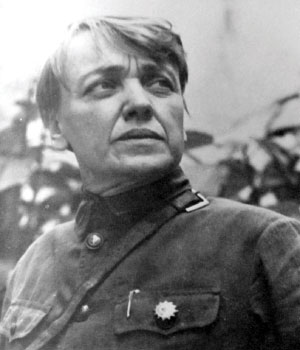 (Right): Agnes Smedley in China in Guomindang uniform, worn by communist and Guomindang troops in central China during the United Front period, 1937-45. (Right): Agnes Smedley in China in Guomindang uniform, worn by communist and Guomindang troops in central China during the United Front period, 1937-45.
In December 1920 Smedley, exhausted from hard work and bickering among Indians, found a position as a worker in a Europe-bound Polish ship. She jumped ship in Danzig and with the help of the Berlin India Revolutionary Committee got permission to stay in Berlin. Her reputation as a remarkable organizer had preceded her. She was immediately accepted as a key member of the committee. Yet, in spite of her total involvement in the movement here she felt lonely and that led her to have a relationship with the famous revolutionary Virendranath Chattopadhyaya. Chattopadhyaya, brother of the prominent leader of Indian National Congress poet Sarojini Naidu, came from a very renowned aristocratic Bengali family. Even though they never got married, they lived together for the next eight years.
Times were tough in war-torn Germany. Under the pressure of the victorious Britain the threat of deportation loomed. So for long eight years Smedley not only worked hard to earn her own living, but to support her common law husband also. She taught English to Germans and wrote articles in support of the movements to get some money. In spite of her hard work she was not much appreciated by Indians. Some of them whom she had known in the U.S., like M.N. Roy and Herambalal Gupta, had moved to Berlin and were jealous of her relationship to Chatto. Gupta had sexually assaulted her once in New York and Roy, too, had designs on her. Gupta did not like now to have a “foreigner” as a core member of the committee. Roy and Chatto also were rivals for a leadership position, particularly in the eyes of Soviet Union and Lenin, who were the main supporters of Indian revolution at this time. Roy never let Chatto come close to Lenin when they attended a conference in Moscow. Both Gupta and Roy attacked Smedley for her “loose character” and accused her of being a British spy. She resented that.
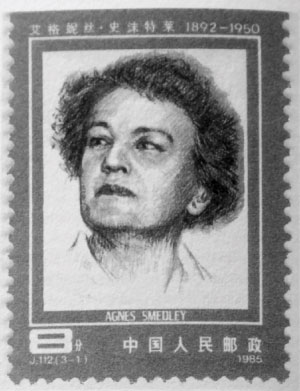 (Right): The Chinese government honored Smedley with this commemorative stamp in 1985. Smedley has never been officially recognized in India. (Right): The Chinese government honored Smedley with this commemorative stamp in 1985. Smedley has never been officially recognized in India.
Meanwhile, her relationship with Chatto was unsatisfactory. With all his revolutionary thoughts and activities Chatto deep down remained a bhadralok Brahmin Bengali aristocrat and could never forget the fact that Smedley originated from the labor class. He tried to control her to the point where he told her not to write anything which he did not approve in advance. He did not like if she was invited to speak on Gandhi by the university. He did not want to introduce her to his sophisticated brother’s wife Kamala Chattopadhyaya. The relationship was such a torture to Smedley that she wrote to a friend:
“Like a storm, he existed according to his nature, absorbing, influencing everything he touched. Our way of life was his choosing, not mine, our home a small edition of that great joint Indian family….. we were desperately poor, and because Viren had no possessions, I sold everything I owned in order to get money.” ……..
“I have married an artist, revolutionary in a dozen different ways, a man of truly ‘fine frenzy,’ nervous as a cat, always moving, never a rest, indefatigable energy, a hundredfold more than I ever had, a thin man with much hair, a tongue like a razor and brain like hell on fire. What a couple, I am consumed into ashes. And he is always raking up the ashes and setting them on fire again. Suspicious as hell of every man near me and of all men and women from America. I feel like a person living on the brink of a volcano crater. Yet it is awful to love a person who is a torture to you and fascinating person who loves you and won’t hear of anything but your loving and living right by his side through the eternity.”
Many years later when she was no longer with Chatto, she wrote:
“To my astonishment and resentment Viren remains the center of my emotional life, and if he were in danger I suppose I would walk barefoot around the world to help him. Yet I would not live with him for a day.”
Could Viren have said the same thing about her?
The relationship caused her to have a nervous breakdown. She had to go for mental therapy and after eight years living with Chatto in tension she gave up. Her dream to go to India remained a dream and after giving more than a decade of her prime youth to Indian cause she was totally exhausted. As her biographers Janice R. MacKinnon and Stephen R. MacKinnon write,
“The shock of discovering the prejudices of ‘revolutionary’ men was intensified because the most paralyzing daggers were thrust at her by her own ‘revolutionary’ husband, Chatto. The institution of marriage was corrupted by the notion of ownership.”
In 1928 Smedley left for China to report on Chinese revolution for several German and English newspapers. She remained there for the next thirteen years and wrote several books on Chinese society among which Battle Hymns of China published in 1943 is remembered most. In China she became close to all the prominent leaders of the revolution. And unlike Indians, Chinese people loved her.
Smedley was a fearless fighter for all subjugated and exploited people everywhere. To her it was not an academic question to be studied romantically. She had seen the plight of the children of earth. She was also disillusioned by the results of the Russian Revolution. Both left and the right disliked her free thinking, but she honestly gave all she had for the causes she chose until she died on May 6, 1950 in London. Her ashes are buried in the cemetery for the revolutionaries on the outskirts of Beijing.
|
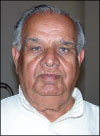 Poet folklorist Ved Prakash Vatuk’s many awards include the U.P. government’s Pravasi Bharatiya Hindi Sahitya Bhushan. “Essays in Indian Folk Traditions,” his collected writings, has just been published by the Folklore Institute, Berkeley, Calif. Poet folklorist Ved Prakash Vatuk’s many awards include the U.P. government’s Pravasi Bharatiya Hindi Sahitya Bhushan. “Essays in Indian Folk Traditions,” his collected writings, has just been published by the Folklore Institute, Berkeley, Calif.
|
|
|
|
|
|